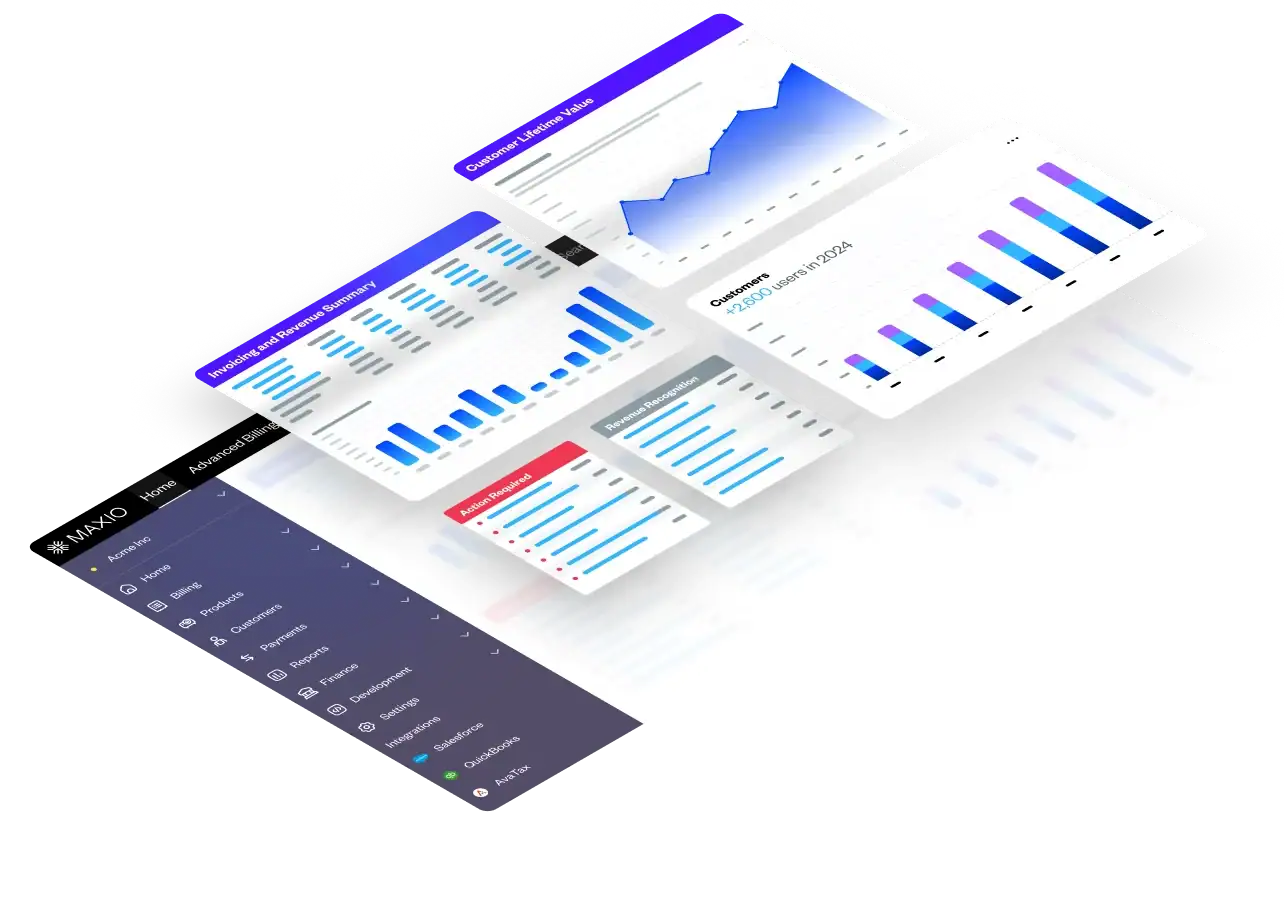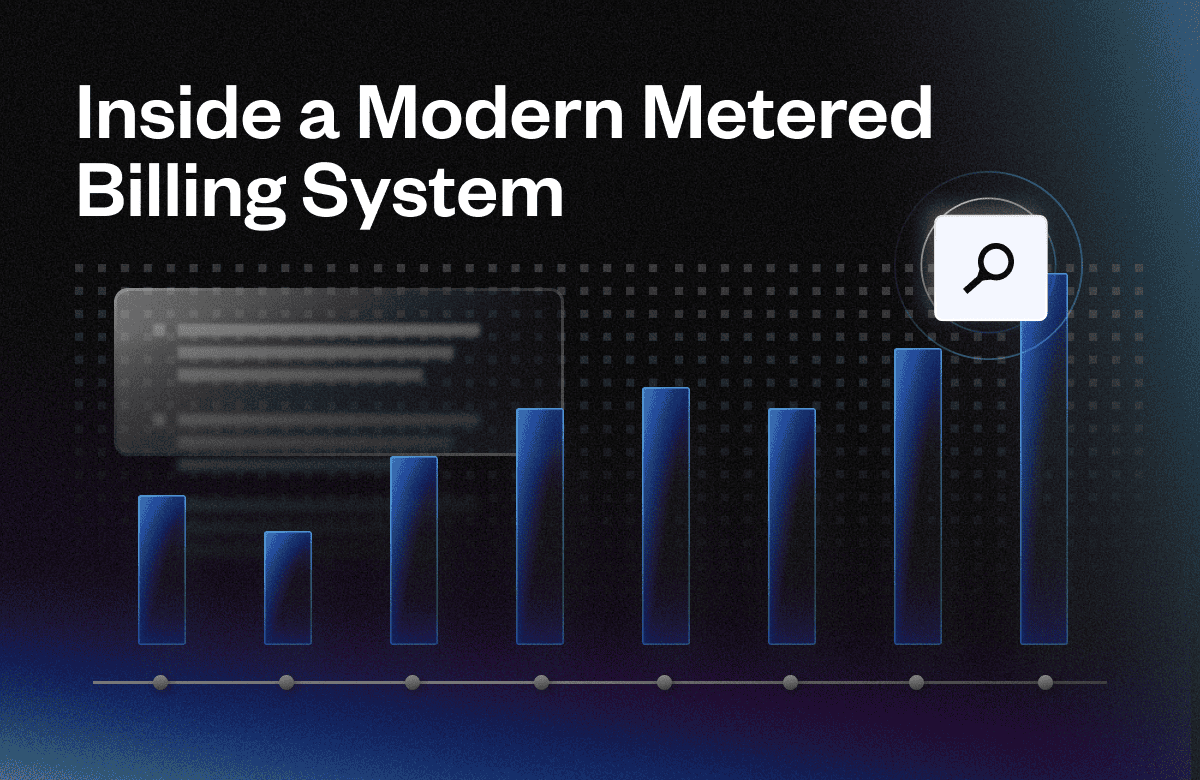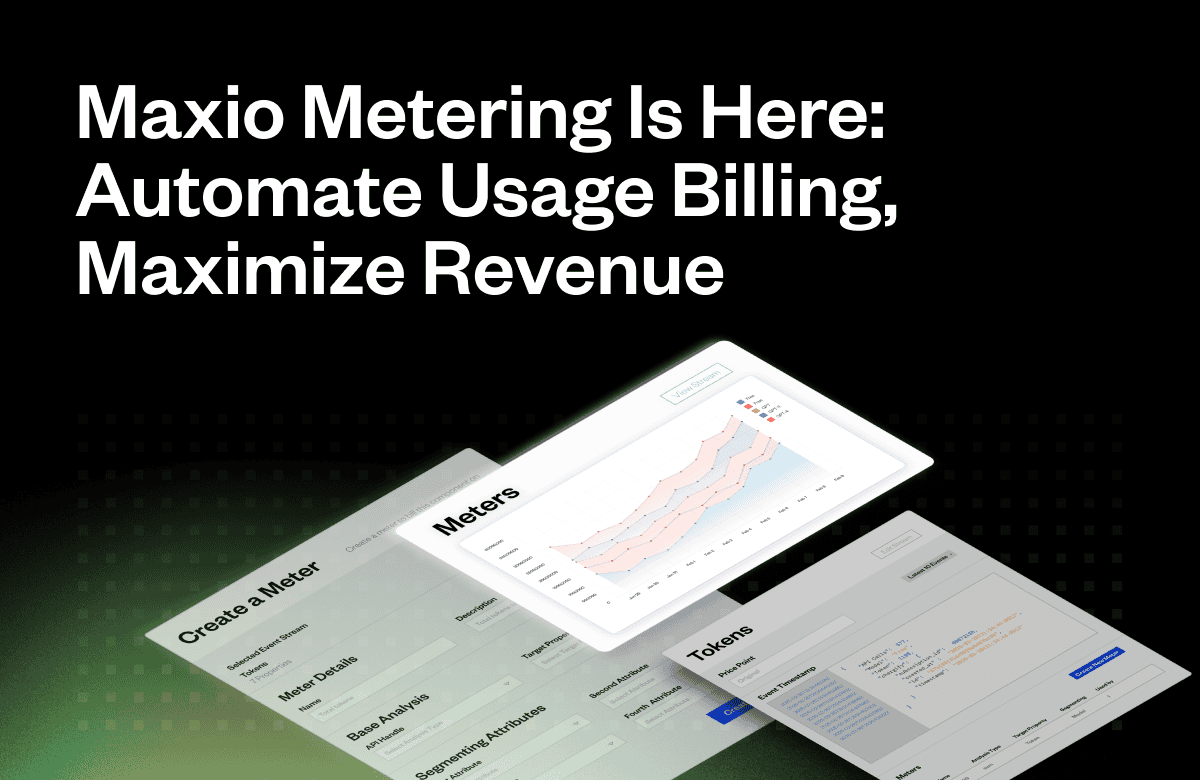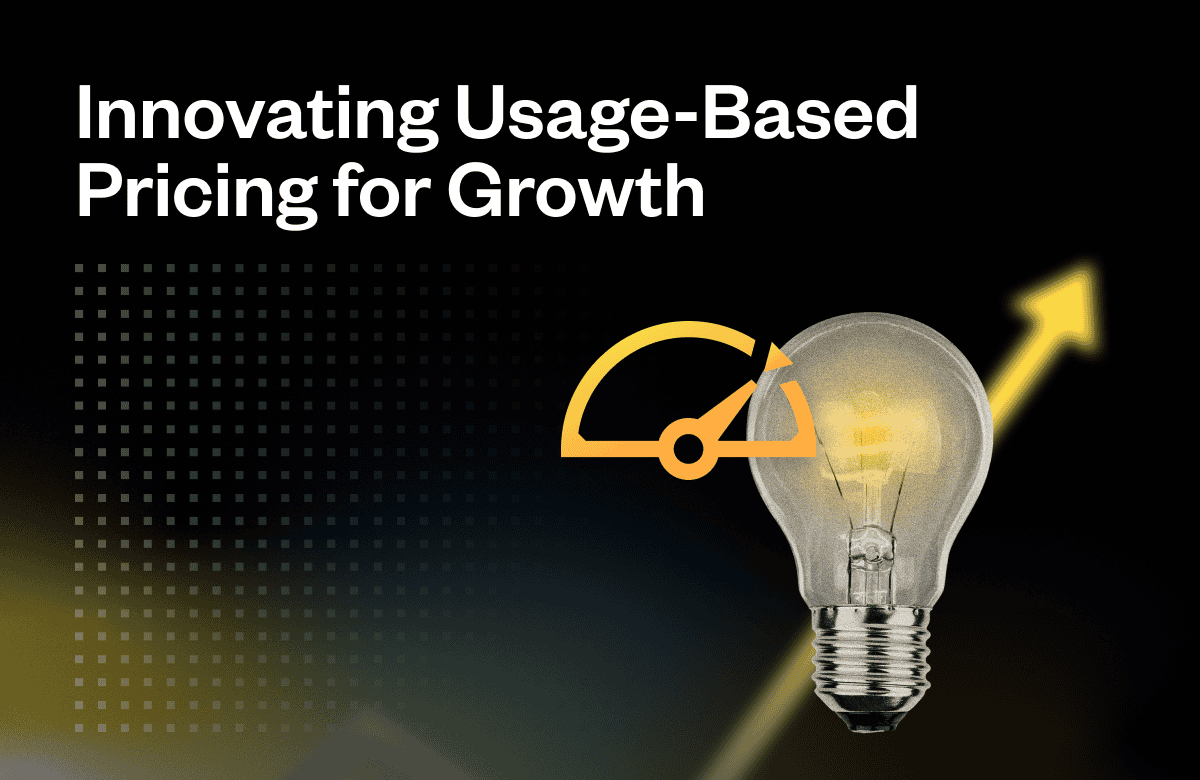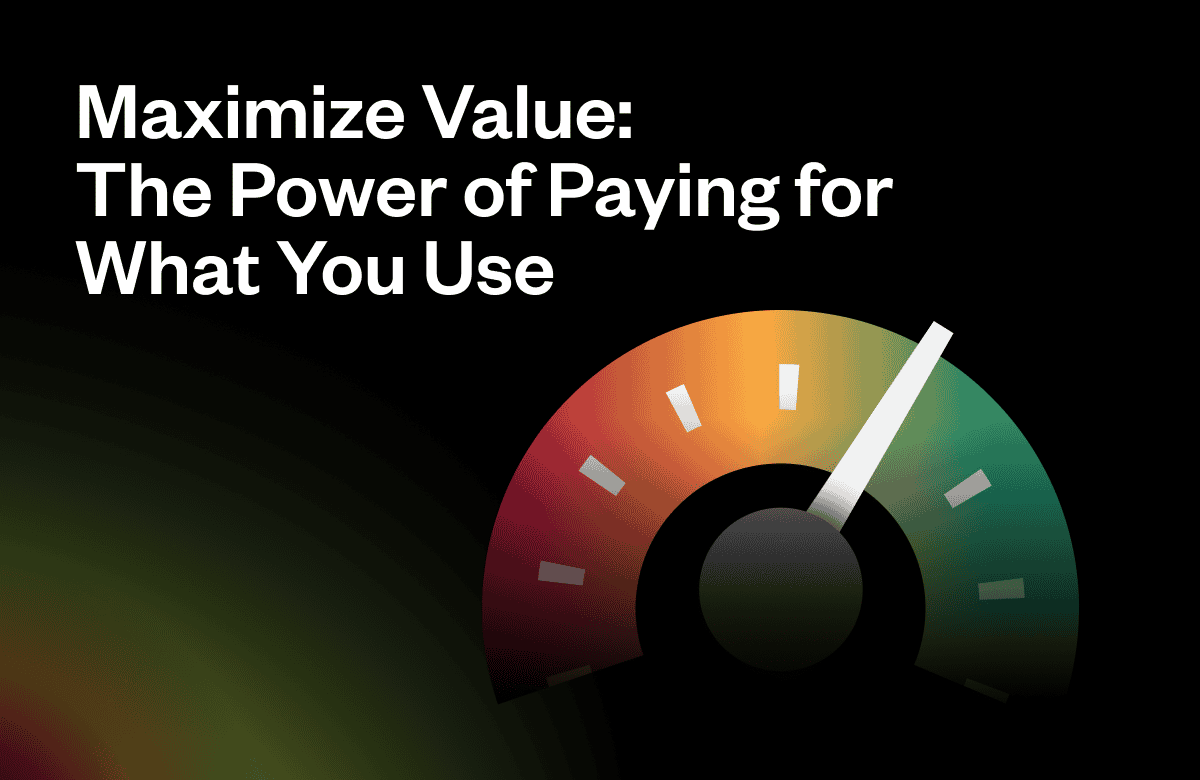SaaS companies are rethinking how they price their products as customers expect more flexibility, and usage varies from one account to the next. Metered billing is one approach gaining traction, not just as a pricing model, but as a way to better reflect how customers interact with a product over time.
In this guide, we’ll walk through how metered billing works, what it takes to implement it, and how it can help your business grow with more predictable revenue and fewer billing headaches. Whether you’re exploring it for the first time or looking to improve your existing model, this is a practical breakdown of what matters and why.
What is metered billing?
Metered billing is a pricing model where customers are billed based on how much of a product or service they actually use. Instead of paying a fixed fee each month, they’re charged for real activity, like data stored or API calls made. This model is widely used in industries where usage naturally varies, such as SaaS and telecommunications.
Metered billing software and usage-based billing software are often used to describe the same pricing model. Both charge customers based on what they use, rather than a fixed amount. The difference usually comes from how the usage data is collected and calculated. Some teams build internal systems to track and summarize usage, while others rely on dedicated tools to process the raw data and generate billing-ready metrics. This approach gives companies more flexibility to connect pricing with how customers interact with their product.
How does a metered billing system work?
Metered billing systems work by collecting usage data, applying pricing logic, and generating invoices. They start by capturing activity in real time, recording what each customer does inside the product. That usage data is then processed through your chosen billing model based on per-unit rates, volume thresholds, or any other defined usage tier.
Once pricing is applied, the billing engine creates an invoice that reflects the customer’s actual usage. This removes the need for estimates or flat rates and gives both the business and the customer a clearer picture of value exchanged.
Components of a metered billing system
A working metered billing setup depends on several core pieces moving in sync. Each one plays a part in collecting, processing, and communicating usage and charges accurately.
Here’s a breakdown of the core elements that make metered billing systems work:
- Usage Metric: This is the specific data point being measured. It might be API calls, storage used, bandwidth consumed, or the number of user seats. Choosing the right metric is important because it directly influences how charges are calculated and how value is communicated to the customer.
- Metric tracking system: This system captures and logs usage. As customers interact with the product, it collects each relevant event and stores that data so it’s ready to be rated and included in the billing cycle.
- Billing Logic & Rate Management: This is where pricing rules are applied to the collected usage data. Whether your product uses per-unit pricing, tiered thresholds, or volume-based structures, this component turns raw metrics into billable amounts based on how your business charges for its services.
- Customer Visibility Tools: Usage summaries and other SaaS reporting tools give customers a real-time view of their activity. These tools help explain where charges are coming from, reduce billing surprises, and improve customer satisfaction by making metered usage easier to understand.
- Adjustment & Notification Systems: These systems manage alerts, credits, and other responses to billing issues. If usage data needs to be corrected or if a customer goes over their limits, this component helps resolve the situation quickly while keeping communication clear and consistent.
Key benefits of metered billing
Metered billing creates more flexibility for businesses and a better experience for customers. Below are some of the key benefits that come from adopting this model.
Only pay for what you use
Customers want to feel in control of what they spend, and usage-based pricing makes that possible. When charges are based on real activity instead of preset plans, pricing feels more transparent and easier to justify. They’re not stuck paying for capacity they don’t use or guessing which plan fits best. This kind of flexibility builds trust and gives customers more confidence in the product. It also reduces tension during billing conversations, since there’s a clear connection between usage and cost. Over time, this helps create stronger, longer-term customer relationships.
Drives revenue growth through usage
With metered billing, revenue grows as customers use more of the product. There’s no need to push upgrades or lock features behind higher-tier plans. As customers find more value and rely on the product more often, usage increases naturally, and billing follows. This creates a steady path for monetization that reflects real engagement. It also encourages product teams to focus on delivering features that drive usage, which supports long-term growth without adding extra friction to the sales process.
Minimizes churn & improves customer retention
When pricing stays aligned with value, customers are less likely to leave. Metered billing adjusts with activity levels, which makes it easier for customers to stick around during slower periods without feeling like they’re overpaying. Instead of canceling, they can scale down and ramp back up when needed. This flexibility reduces the pressure to make hard decisions about whether a product is “worth it” every billing cycle. It also gives teams a better chance to keep customers engaged over time, leading to more stable and predictable revenue.
Reduces friction during onboarding
Metered billing makes it easier for new customers to get started. Without high upfront costs or rigid plan commitments, teams can try the product without needing approval for a large budget. This is especially helpful for startups or companies testing a new solution. They can begin with low usage, see the value firsthand, and grow at their own pace. Removing barriers at the start creates a smoother onboarding experience and increases the chances of long-term adoption.
Supports a wide range of customer needs
Metered billing makes it easier to serve customers with different levels of usage and changing needs. Smaller teams can start with limited activity and pay only for what they use, while larger customers can scale without needing custom plans or manual billing work. This flexibility allows one pricing model to work across a variety of use cases, from early-stage adoption to high-volume enterprise accounts. As customer needs grow, the billing system grows with them, without requiring constant adjustments behind the scenes.
Examples of metered billing
Metered billing supports a wide range of usage-based pricing strategies. Below are four usage-based pricing examples that show how charges are calculated from actual usage data. These scenarios highlight how different usage patterns lead to different billing outcomes across common SaaS models.
- Email marketing: Pricing is often based on the number of emails sent or the size of the contact list. Company A sends 20,000 emails during the billing cycle and pays $200. Company B sends 250,000 emails and is charged $1,800. Larger send volumes reflect higher campaign activity, giving each team the freedom to scale without changing plans.
- API calls: Many products charge based on the number of API requests made. Company A makes 50,000 API calls and is billed $100. Company B makes 1.2 million and pays $1,900. This setup works especially well for developer tools, where usage can spike as customer apps grow or run more frequent automations.
- Data storage: Pricing increases as more data is stored over time. Company A stores 75 GB and pays $90. Company B stores 2.5 TB and is billed $2,000. This lets companies manage growing data needs without prepaying for storage they may never use.
- Customer support communication: Some platforms bill based on support volume, such as tickets handled or messages exchanged. Company A handles 120 support tickets and pays $150. Company B resolves 3,000 and pays $3,600. For support teams, this pricing ties costs to actual workload, making it easier to forecast and manage internal capacity.
- Workflow automations: Some SaaS platforms charge based on the number of automated workflows or tasks triggered within a billing period. Company A runs 1,500 automated tasks and pays $120. Company B triggers 75,000 tasks and is billed $2,250. This shows how this pricing model fits tools that help teams scale repetitive work and connects cost directly to operational volume.
Best practices for setting up metered billing
Getting metered billing right depends on the structure behind your billing system. Without the right setup, small issues can quickly turn into bigger problems. The following best practices can help reduce billing friction and create a better experience for both your team and your customers.
Choose the right usage metrics
The success of metered billing starts with picking the right metric. It needs to reflect the actual value your product delivers and match how your customers interact with it. A strong metric should be easy to measure and tie directly to the product’s core function, not something abstract or difficult to explain.
For example, a CRM that charges based on the number of contacts created ties billing to an action that clearly connects to customer outcomes. If the metric feels disconnected or confusing, customers are more likely to question the bill, even if the math is correct. The more aligned the metric is with real customer value, the easier it is to price fairly and communicate clearly.
Track usage in real time
Real-time usage tracking helps you stay ahead of issues that could impact billing accuracy. If usage data only updates at the end of the billing cycle, it’s harder to catch errors or explain unexpected charges.
For customers, seeing their usage update regularly helps them feel more in control. It also builds trust, especially when paired with alerts or in-app usage displays that give ongoing visibility throughout the billing period.
Test your billing scenarios
Before going live with any usage-based pricing, it’s essential to run test cases across a range of real-world and edge-case scenarios. Test both light and heavy usage, as well as unexpected behavior like zero usage or delayed data reporting.
These tests help uncover gaps in your logic or missed thresholds that might cause incorrect charges. Running these scenarios also prepares your support team to handle questions with more context. When they’ve seen examples of how the billing system works under different conditions, they’re better equipped to guide customers through their own usage questions.
Ensure transparent communication with customers
Even the most accurate billing system will create friction if customers don’t understand what they’re being charged for. Good communication reduces that risk by making usage and pricing easy to follow. That might include usage dashboards or messages triggered when customers reach certain thresholds.
FAQs and support docs should also be utilized to walk through how billing works using plain language and examples. When customers can see what they’ve used, know how it will be priced, and get alerts before surprises show up on the invoice, the whole experience feels more predictable and fair.
What to consider before implementing metered billing
Switching to metered billing affects more than just the numbers on an invoice. It changes how your company defines value, how usage is tracked, and how teams talk about pricing. If you’re thinking about what to consider when rolling out usage-based pricing, this section covers key areas that need to be evaluated before making the shift.
- Tracking and Infrastructure: A reliable setup is essential. Your billing system and provisioning workflows must be able to track usage consistently and accurately. Weak infrastructure can cause billing delays or errors that are hard to fix and even harder to explain to customers.
- Customer Response: Some customers may prefer flat rates for budgeting purposes. Clear messaging helps ease this transition. Explaining how the new approach aligns with value-based pricing in SaaS can help customers see the benefit of paying for what they actually use.
- Internal Alignment: Customer-facing teams must be able to explain the billing model with confidence. That means sales, marketing, and support may need to adjust how they describe pricing and prepare for new types of customer questions. The smoother the internal rollout, the easier it is to support customers during the change.
Set up your metered billing workflow with Maxio
Switching to metered billing changes how you charge customers and how you run your billing process. It gives teams more control over pricing, helps customers see exactly what they’re paying for, and creates fewer roadblocks as usage grows. With the right tools in place, it becomes easier to manage billing without adding more manual work.
Maxio’s subscription billing software is built to support metered billing from end to end. It captures usage data in real time, applies pricing logic, and generates invoices based on each customer’s activity. Built-in tools for reporting and usage visibility help prevent errors and make the process easier for both finance teams and end users.
If you’re looking to launch or improve your metered billing setup, Maxio can help. Schedule a demo to see how the platform supports reliable billing operations and long-term growth.
